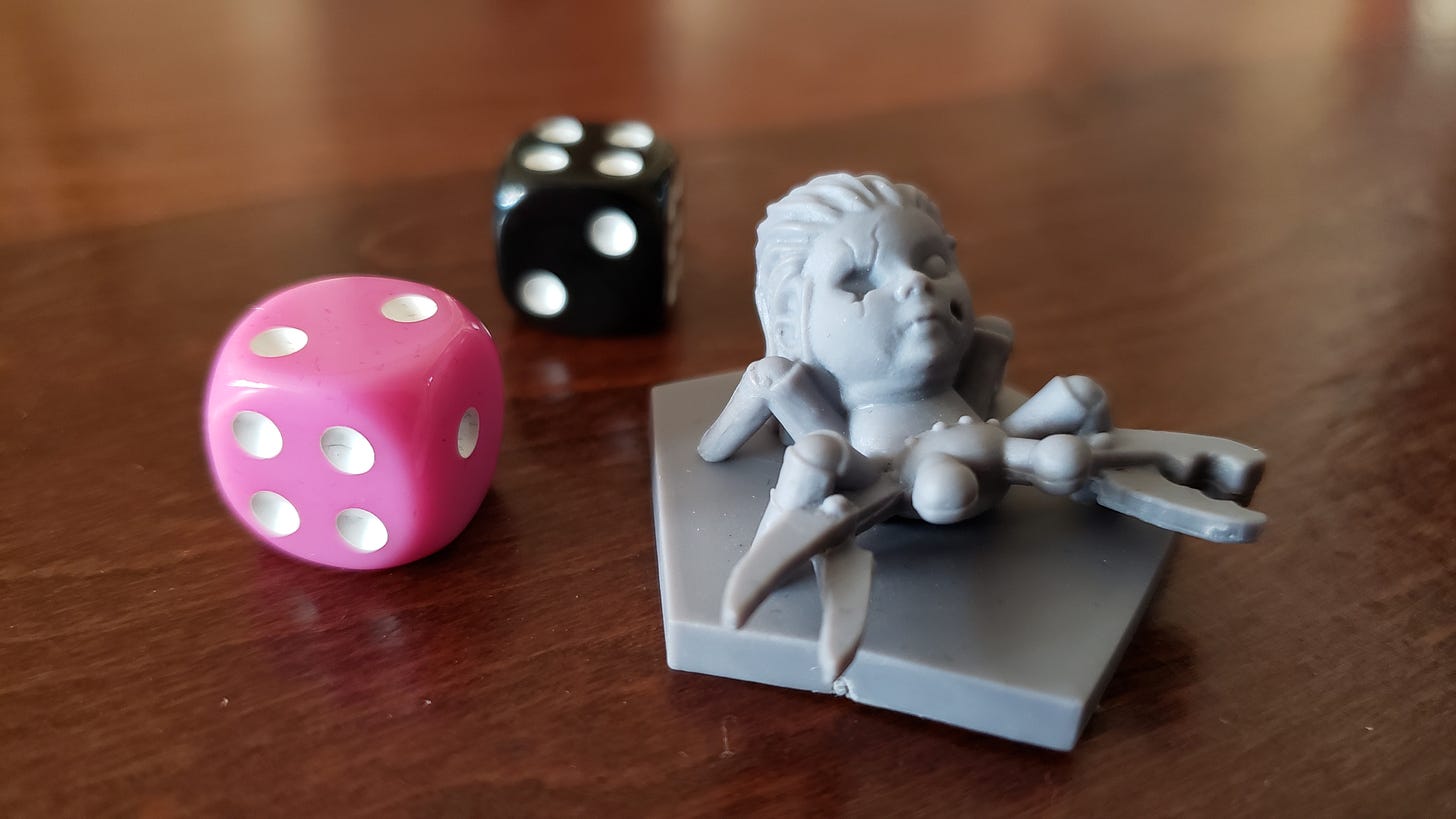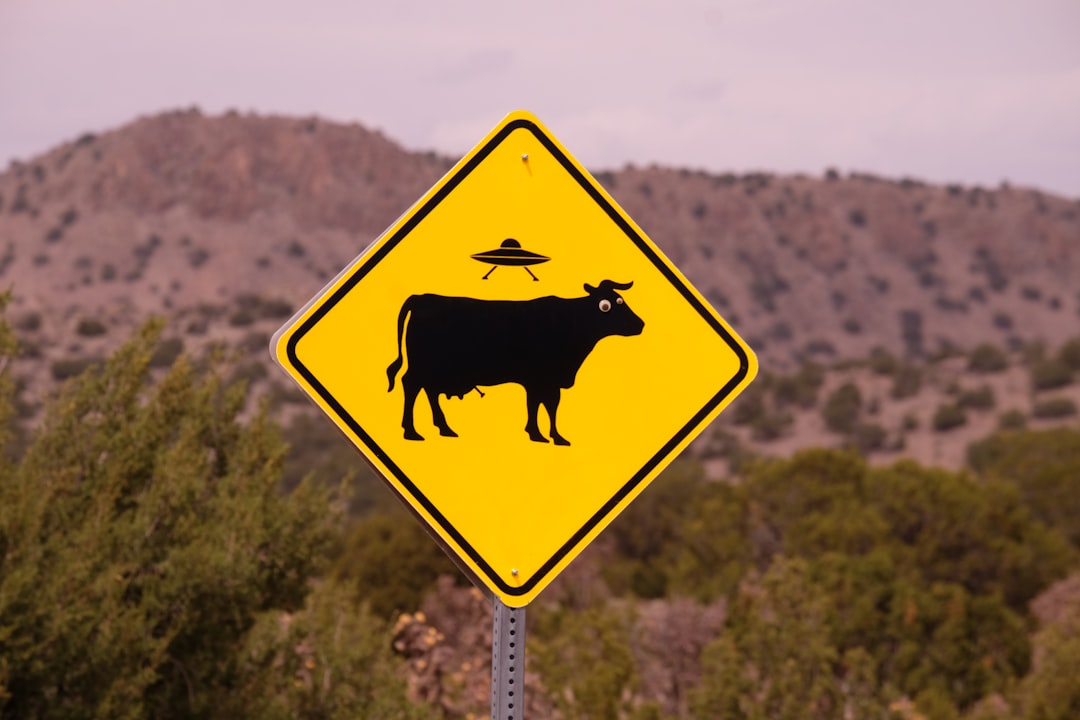You might have noticed the audio file at the top of this article. That’s a new feature made possible by my transition to Substack. If you don’t feel like reading (or if you don’t have the time or simply need both of your hands free to battle the sentient hair clog that crawled out of your drain and is now threatening your entire family), you can play the audio version, which is exactly the same as the article below. Okay, pretty close to the same. I might have added a few comments here or there because narrating is hard and sometimes I have to stop to yell at my kids or pigs. My house is the exact opposite of a professional recording studio.
There’s no crying in baseball. There’s absolutely crying in board games.
So, so much crying. Like, oceans of tears. Board games are basically just emotional trauma in a box.
I didn’t expect it to be this way. I thought board games would be a way for me to connect with my kids. I’m not good at faking it when it comes to having fun. I had a hard time doing things that were boring to me but amazing to my kids when they were toddlers, like jingling keys or playing peekaboo. I know I’m only a lowly English major, but I’ve already mastered object permanence. Talk to me when you’re ready for Settlers of Catan.
Recently, I thought my kids had reached that milestone. I’m in the process of amassing a stockpile of board games worthy of the apocalypse. Originally, it was a way to connect with other adults. Board games provide a thin veneer of socialization to what’s really just an afternoon of day drinking. I was finally building a robust circle of friends, but then I hit a snag. It turns out other adults are busy. They have kids and jobs and pets and extended families and reruns of things they’d rather watch for the hundredth time than hang out with me. Predictably, my invitations to come over for a day of board games and adult beverages were regularly declined. Then I realized I was doing it all wrong. I had a captive supply of players right here in my own house. I made them myself. Well, I helped make them. My wife Lola still claims the lion’s share of the credit, but whatever. Mark me down on the stat sheet with four assists.
My daughters are eleven, nine, seven, and six years old. Some of them are of prime board game playing ages right now. The posted limits on the box are just a suggestion, anyway. If I let my six-year-old, Waffle, play a game meant for ages eight and up, the FBI won’t kick down my door and drag me away. (At least they haven’t yet. I should probably call my sister who’s studying for the bar exam just to be safe.) Playing board games with my kids changed all of my stated objectives. They didn’t help me meet new people because I already know everyone I live with. Often, I wish we knew each other a little bit less. Playing with my kids also didn’t give me an excuse to day drink. Don’t get me wrong, attempting any board game with them made me want to drink more than ever, especially when literally every turn featured at least one of them screaming at the top of their lungs at the rest of the group. But they’re a tad young for booze, even in a Catholic family, and being the only one at the table with vodka seemed like the first step down the road to an intervention. That meant that when I had game nights with my kids, I was playing board games simply because I liked board games. I’m thirty-six years old, and I’m still learning new and disappointing things about myself. Self-discovery and self-respect seldom go hand in hand.
The catalog of board games I introduced to the kids covered every conceivable genre. There were complicated strategy games and loud party games and games where you have to slap cards. The latter quickly got out of hand and nearly sent a few kids to immediate care with broken fingers. It’s a good thing their skeletons are still mostly cartilage. At first, I picked board games based on the recommendations of human beings I encountered in real life. Online reviews are impossible to decipher in categories this subjective. Every game will garner some people who say it’s better than chocolate and some people who claim it’s the cardboard antichrist with nothing in between. Instead, I walked into brick and mortar board game stores and asked the local proprietors what was good in a crude imitation of what commerce must have been like in the 1800s. I don’t trust the reviews of thousands of people I’ve never met, but I did trust individual store owners who were also total strangers to me. Apparently I only distrust people at scale. Or maybe I just liked being forced into making a decision. It’s pretty much impossible to ask a small business owner to show you all of his wares and then not buy something. The awkwardness would kill me. Each time, I walked out of the store with an armful of games for which I paid full retail price. I felt good because I supported a local business and because I had the confidence that comes with a personalized recommendation. Then I did what I always do and screwed it up by becoming incredibly cheap.
Eventually, I figured out that I could have a large board game collection or I could have a house, but not both. It sounds like an exaggeration, but it’s really not. The only hobby more expensive than board games is a serious drug addiction. Some of the more intricate board games on the market can easily cost northwards of a hundred dollars, all for something that’s literally just cardboard and plastic. Then again, I shouldn’t judge. The cost is in the intellectual property, not in the manufacturing. I sell books, which are just paper, no plastic included. Maybe if I added minifigures of my family I’d finally make the New York Times bestseller list.
I changed my board game buying habits when I finally realized that, with only fifty-two weekends a year—and with fifty-one of those weekends being taken up by youth soccer—there were an extremely limited number of opportunities to play those games, especially when you consider that board game times needed to be coordinated with other people. Really, what were the odds that my one soccer-free weekend would line up with the soccer-free weekend of another couple that liked board games and didn’t have some highly dubious excuse to get out of seeing me. Sorry to hear you have to visit your aunt who came down with an acute case of being a werewolf. My stroke of brilliance was realizing that lots of people buy games, but that, like me, they don’t have time to play them. That meant there must be a glut of pre-owned, barely used games with owners who felt guilty for buying them in the first place. They were probably looking to unload them at a steep discount to save their finances and their marriages. Impulse board game purchases are the third leading cause of divorce (The first two are infidelity and breathing too loudly.). I searched for used board games on Facebook Marketplace and was overwhelmed by the sheer volume of options. As if I needed another excuse to stare at my phone all day. The next time I look up from my screen, my kids will all be in college.
Of course, to find a good deal, you have to sort through more than a few duds. Board game geeks don’t really understand the free market. They bought their beloved game for $60 two years ago and only played it once, so now they’re selling it for the low, low price of $58 plus shipping. God help them when they find out that Amazon Prime exists. Worse still, there were a shocking number of games that were listed for above their original retail value. Apparently the owners thought they deserved a premium for opening the game and sneezing on it once. Lysol wipes not included.
I have more time than money (It turns out you can browse Facebook marketplace while at a soccer game), so I plowed through the overpriced listings to find the diamonds in the rough. At first, I thought I was doing well if I could find an almost-new game for fifty percent off retail. Then I decided I didn’t want to spend more than ten dollars a game, before cutting that limit in half. My crowning achievement was when I found a pile of brand new games listed for five dollars each and negotiated my way down to four. I was out of control. Granted, there were downsides to the secondary market. I had to drive to strangers’ houses to complete many of these deals, but the risk of getting murdered was worth it for hundreds of pennies in savings. My kids might have to grow up without a father, but at least their game cabinet would be full.
I became so obsessed with getting the best deals that I forgot the other downside of board games. Not only would I have to find time to play them and people to play them with, but I’d also have to learn all the rules. Then I’d have to teach those rules to other people. Every time I try to teach a new game to Lola, we come within a hair’s breadth of becoming the subjects of a true crime podcast. She’s a woman of science; you’ll never find my body. It’s hard for me to pin down exactly what I’m doing to annoy her so much, but as far as I can tell, her preferred learning style is “not from me.” It doesn’t help that I may or may not even fully understand a game before I try to explain it. Add to that the pressure of teaching a table full of other adults, who are only half listening and just want me to shut up so they can talk and drink, and it’s amazing I don’t have a nervous breakdown every time we play. Board games are not for the faint of heart.
Things went much better when I gave up on playing board games with Lola and other adults and started playing games with my kids. Perhaps they’re more tolerant of my failings, or maybe I just speak more at their level. I still haven’t taught Waffle how to tie her shoes, but I helped her master Space Base, Dixit, and Taco, Cat, Goat, Cheese, Pizza. That last one is actually a card game and not just a random series of words, although I guess it’s that, too. It also helped that the kids were extremely eager to play with me. They’re still at that misguided age where they value my attention. I have to take advantage of it before they wise up. My eleven-year-old, Betsy, is already on the verge of recognizing that, in addition to being her dad, I’m also a lackluster adult and all around subpar human being. Curse her ability to pick up on basic social cues. I was hoping to fool her until she was at least twenty.
I have a general arc of games I want to walk the kids through. In my buying spree, I happened to find a great deal on a brand new copy of Gloomhaven, which is universally recognized as the ultimate board game by strategy aficionados everywhere. It’s a dungeon crawler, where players move plastic pieces across a grid to fight monsters, but times a thousand. It has more than ninety four-player scenarios. I would never get three other adults to sit down with me for that many hour and a half sessions, but I could play through it with my kids. With luck, we might even finish it before they all have families of their own. Of course, with four of them and one of me, that’s one too many players, but Waffle and I would run one character as a team since she can’t quite read yet. Hopefully she doesn’t pick it up too fast because I really want to play.
I can’t, however, simply jump into the most complex game on earth with a party of children. We have to build up to it. First, we should play through the prequel to Gloomhaven, which is supposed to be simpler, even if it has twenty-five scenarios of its own. And before that, we should probably replay Mice and Mystics, which is a dungeon crawler we already tackled years ago, back when the kids were more at the jingling keys and peekaboo stage. The good news is none of them remember it, so it will be like a whole new game. But prior to any of that, I decided that we would start with Stuffed Fables, the simplest, most kid-friendly dungeon crawler on the market that made all of those other games look like holographic 4D chess by comparison. This approach would take up all of our future free time and tax my children’s already limited attention spans to the absolute breaking point. It was the perfect plan—as long as my kids cooperated. You can guess where this is going.
Before we began, my nine-year-old, Mae, actually begged me to find a time to play Stuffed Fables, but her enthusiasm wasn’t contagious. Waffle and my seven-year-old, Lucy, were neutral about this particular game, while Betsy was borderline hostile. It turns out playing a board game with her family is less interesting than literally anything on her phone. Each player in Stuffed Fables is a stuffed animal defending their beloved child, who is sleeping peacefully in her bed. The kids learned the rules in no time flat and were quickly ready to play. Then, the game actually started and all hell broke loose. Waffle was terrified. That caught me off guard. The monsters in the game are just small plastic figurines. She sees scarier stuff on various streaming services every day, which she watches without any oversight. This was by design. I figured it was better to traumatize her early so she’d be ready for the harsh realities of the world, which is why you should never take any parenting advice from me. But somehow, those tiny figurines on the board and the story that went with them was more horrifying than anything she had seen on a screen. The human imagination is a terrible thing. That’s why I try to use mine as little as possible. Waffle was immediately in tears, but I did my best to comfort her and move forward. I’d spent too much money on heavily discounted board games to give up two minutes into page one of the story manual.
Lucy was the next to have a meltdown. She took damage from a hermit crab monster thing and let loose with a wail like she’d been stabbed in real life. The trauma was real. I didn’t think board game violence would be a big deal. All four kids join me on Friday nights when we play Halo, a video game where you’re a super soldier who gets blown up and tossed off cliffs and impaled by giant metal skewers launched from half a map away by some thirteen-year-old you didn’t even know was there. For three hours every week, we do nothing but get eviscerated in the worst ways imaginable, yet somehow, taking imaginary damage from a dice roll was worse. Lucy’s tears of rage were uncontrollable. Soon, Mae took damage and was bawling, too. Only Betsy’s eyes stayed dry. She confined herself to annoyed sighs and angry huffs, which are like a second language to her now. Her teenage years are going to be rough.
The only thing that annoyed the kids more than the enemies was each other. Stuffed Fables is a fairly open ended game where the girls had to make decisions as a group. It did not go well. The average discussion volume can only be described as “howler monkeys fighting over fruit.” There are actual wars that are quieter.
Somehow, we made it to the end of the first scenario. I read the victory text to the group. Then, something completely unexpected happened: Mae told me how much fun she had had. It was like she’d been playing a completely different game. “When you read it, it’s like I’m really there,” Mae said. That might explain some of the drama when the kids took damage. Even a 4k video game isn’t that immersive. Against all good judgment, we’re going to move forward with this game—and all the ones that come after it. I have a feeling that every time we do, the kids will cry and complain the whole way. And then, when we’re done, they’ll retroactively think they had fun thanks to a weird rose-colored amnesia. I hope they apply that same filter to the rest of their childhoods. At this rate, I don’t know if we’ll ever be ready for Gloomhaven. The only thing I’m sure of is that, in the coming weeks and months, we’ll all get more quality time together than I ever imagined possible. And it might just kill us all.
If you liked this article, feel free to share it across the internet. That really helps me out.
And remember, the first ever bonus article for paid subscribers comes out this Thursday. I’m starting out with a story Lola specifically warned me not to tell. But it will be behind a paywall, so that doesn’t count, right? I guess that’s for divorce court to decide.
Catch you Thursday.
James















Dying on the Table